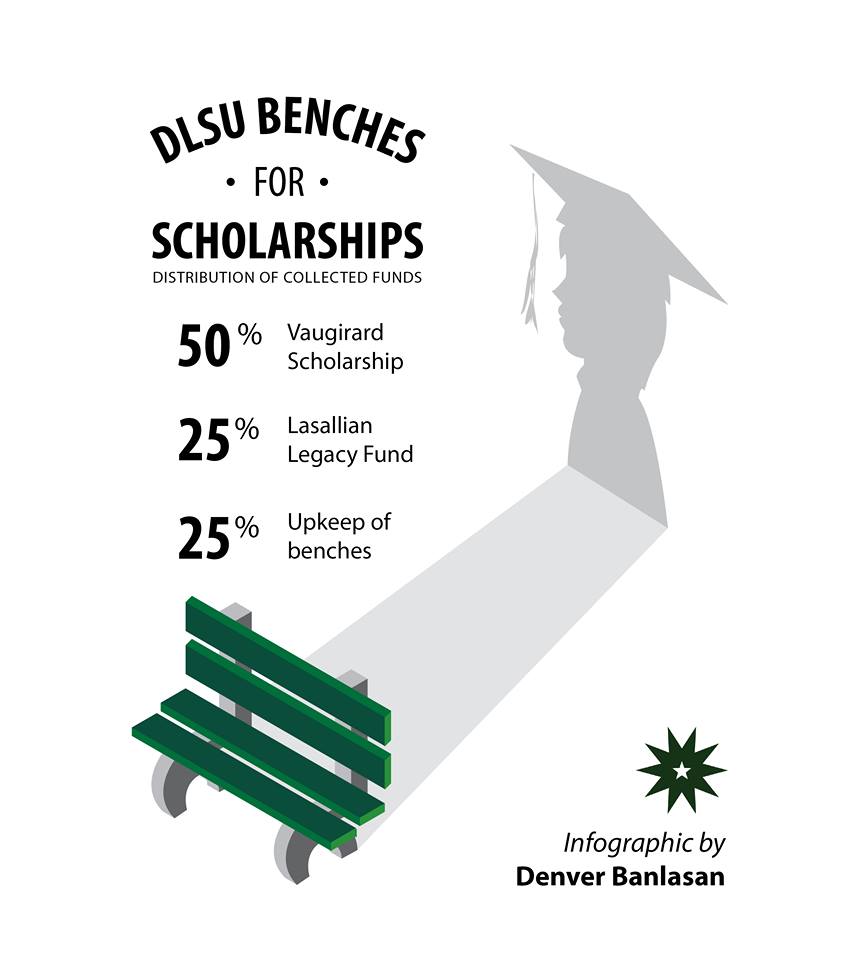“A leading learner-centered research university, bridging faith and scholarship in the service of society, especially the poor” — thus reads De La Salle University’s (DLSU) Vision-Mission. True to its mission of making Lasallian education accessible to all, especially for those economically challenged, the University continually finds ways to generate more scholarships for its students.
A new target
The University has dedicated itself to strive to offer scholarships to at least 20% of its student population. The LaSallian previously reported that DLSU was able to actualize this target towards the end of the academic year 2012-2013.
Before leaving as the University, former President and Chancellor Br. Ricky Laguda FSC has pushed DLSU’s Full Scholarship Equivalence (FSE) target to 25 percent. The FSE is the percentage of the University’s full scholars versus the total number of full-time students enrolled.
With the new target of 25 percent, the University’s Office of Admissions and Scholarships is among those involved in creating different projects to generate more funds for the benefit of the University’s scholars. “To make the Lasallian education accessible to those who are intellectually capable but financially handicapped” is one of the objectives of the OAS. Both undergraduate and graduate students enrolled at the University are able to avail of scholarship grants as well as tuition discounts.
Aiding to the efforts of the OAS is the Advancement and Alumni Affairs Office (AAAO). The AAAO also initiates and takes charge of several funding sources for use of scholars at the University.
Sourcing scholarship grants
OAS Coordinator for Externally-Funded Scholarships Joel Navarez explains that there are two sources of funding for scholarships: internal and external. According to Navarez, internal funds are taken from the University’s operating budget. On the other hand, external funds come from the DLSU Science Foundation, Inc., endowment funds from external donors, as well as the bulk of scholarship grants from international organizations, government organizations, private foundations, private corporations, alumni groups, and individual donors.
Meanwhile, on the side of the AAAO, Annual Campaigns Head Ramoncito Dizon describes that their office is involved in a series of fundraising activities that aims to cover the tuition and fees of the University’s scholars. Most notable of which is their project “Benches for Scholarships,” an initiative that enables interested University stakeholders to donate money for scholars and have a bench named after them for 10 years in return. Moreover, Dizon explains that they also have other ongoing initiatives and tie-ups with alumni and partner groups such as the Bank of the Philippine Islands in order to facilitate fundraising for the benefit of the University’s scholars.
“Fundraising is an art,” Dizon expresses. He admits that coming up with new ways to raise funds becomes a challenge given the University’s existing projects. Currently, according to Dizon, the AAAO is involved in telemarketing campaigns where, in addition to reconnecting with alumni of the University, their office sends alumni online updates through newsletters and asks if they are interested to donate for the benefit of scholars.
Where does the money go?
According to Dizon, proceeds from the “Benches for Scholarships” project are divided as such: 75 percent is given to the OAS to be utilized for scholarships and the remaining 25 percent is kept for bench maintenance. The 75 percent is further broken down into two: 50 percent of the funds go to the Vaugirard Scholarship while 25 percent is directed to the Lasallian Legacy Fund.
The Vaugirard Scholarship is awarded to the top 50 freshman applicants hailing from public schools in the country. On the other hand, the Lasallian Legacy Fund is a program for “academically qualified students coming from underprivileged families, particularly those families who have an annual income below P700,000,” states Dizon.
Dizon further explains that the funds collected from their office’s projects are handed over to the OAS. The funds are then directed to cover scholars’ tuition and fees as well as miscellaneous fees such as lodging and a monthly stipend.
“Scholarship donations are fully utilized for scholarship-related expenses,” Navarez confirms. He elaborates, “External funding provides financial support for the payment of tuition fees as well as allowances of some scholars.”
Among the various scholars in the university, those who mostly benefit from the funding program, according to Navarez, are the “need-based scholars such as St. La Salle Scholars and Vaugirard Scholars.”

